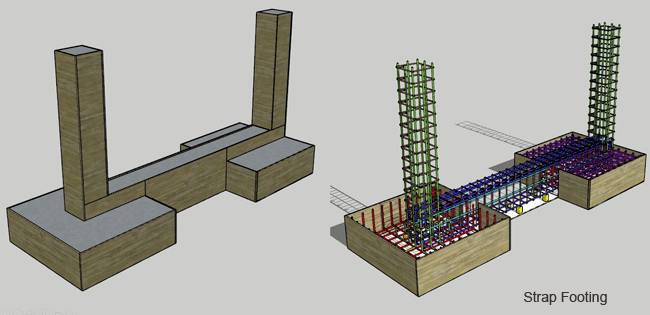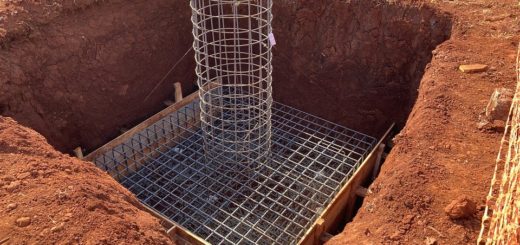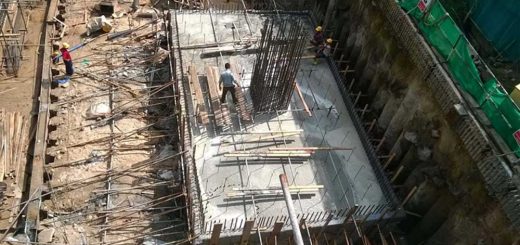Building Foundations design and construction guide
Building foundations are categorized based on the parameters such as nature of the structure, applied loads, ground condition, environmental conditions, etc.
The most important part of the structure is the foundation. Therefore, special attention shall be made when finalizing the foundation.
Building foundations are also the same as the foundations constructed to build other structures.
Mainly there are two types of foundations.
- Shallow Foundations
- Deep Foundations
Shallow Foundations
The main type of foundation used in the low-rise buildings is the shallow foundations. Out of shallow foundations, the most common and economical building foundations are the pad footings.
- Pad footings
- Combined Footings
- Strip footings
- Mat foundations
- Strap footings
Most of you are aware of the above types of foundations. Let’s discuss a little more about strap footings.
Strap Footings
Strap footings are a special type of footing constructed due to the limitation of the space. With the limitations in the space, buildings are constructed up to the boundary. In these situations, we can not place the column at the center of the footing. Footing will have to be at the edge of the footing.
Due to the eccentric loading in the strap footing, it is required to provide a beam as indicated in the above figure to balance the pressure under the footing.
Construction of the strap footing is challenging when compared to the other types of building foundations as more excavation and skill are required.
Deep Foundations
Deep foundations are not common for low-rise buildings (1-5 stories) unless there are weak ground conditions. Some of the deep foundations are as follows.
- Cast-in-situ bored piles
- Driven piles – precast piles
- Timber piles
Factors affecting Foundation Type
Let’s discuss the main factors to be considered in selecting types of foundations.
- Applied Loads
Mainly there are two types of load to be considered in designing building foundations. They are vertical loads and horizontal loads.
Articles types of loads on structures and different types of lateral loads could be read for more information.
- Nature of the Structures
The nature of the structure significantly affects selecting the type of foundation. A normal structure only has vertical load and horizontal loads. However, the irregular structures could generate inclined forces that are required to support the building foundations.
- Soil Condition
The most important factor affecting the foundation type is the soil type.
The nature of the foundation construction and design solely depends on the soil layers at the site. The parameters determined from the ground investigation are used to evaluate the foundation type.
If soil is weak, even of a small building, it could be required ground improvements. When it is not possible to have an adequate bearing capacity with a shallow foundation, we have to construct the building on the deep foundations.
Articles ground improvement for low rise buildings, ground improvement methods and soil stabilization could be read for further information.
If foundations are not designed properly without taking into account the bearing capacity foundation failures will occur. Articles of foundation failure and shallow foundation failure could be read for further information.
Settlement of Building Foundations
The most challenging task of the building foundation design is the settlement of the foundation. This issue mainly rise in the shallow foundations
A uniform settlement at each column location is not an issue. Different settlement causes at columns create serviceability issues and even it could lead to structural failures.
In the pad footing design, the area of the footing shall be selected in a way that the pressure under all the footing is approximately equal. Then the settlement of the footing ould is uniform.
Articles settlement of shallow foundations and consolidation settlement could be studied for more information on this subject.




